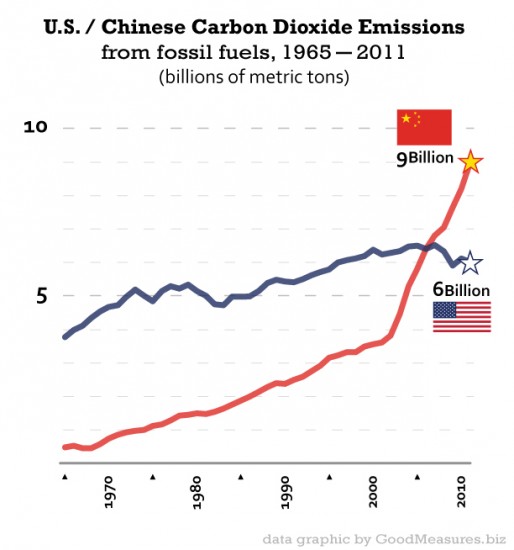There’s some good news in BP’s most recent Statistical Review of World Energy: in the US, total greenhouse gas emissions from fossil fuels fell 1.8% from 2010 to 2011. And in even better news, total US emissions have fallen by more than 7 percent from their 2005 peak. (Note that Barry Saxifrage recently spotted the same trends in data from the International Energy Agency.)
But there’s also some really, really bad news. In fact, here’s the most frightening chart I’ve seen in weeks, created by Sightline pal Devin Porter, showing total climate-warming emissions from fossil fuels consumed in the US and China:
Just as US emissions started to moderate, China’s started to skyrocket. And in both countries, coal has played an outsized role in emissions trends.
In the US, a flattening in demand for electricity, coupled with a shift among electricity generators away from coal and towards natural gas, has been responsible for much of the decline in national CO2 emissions. Today, about 40 percent of the nation’s electricity comes from coal, down from 50 percent just a few years ago. In China, the reverse is true: demand for electricity is skyrocketing, and the vast majority of the nation’s power comes from coal. Even though China has made some impressive investments in renewables, the nation’s coal addiction has simultaneously created a public health crisis and pushed it past the US into the top spot among global climate polluters.
As US demand for coal declines, the coal industry is desperately trying to ship its products to China. But why on earth would we possibly want to make that red line rise any higher—especially when we can take pride in the fact that our own emissions are finally easing?



Comments are closed.